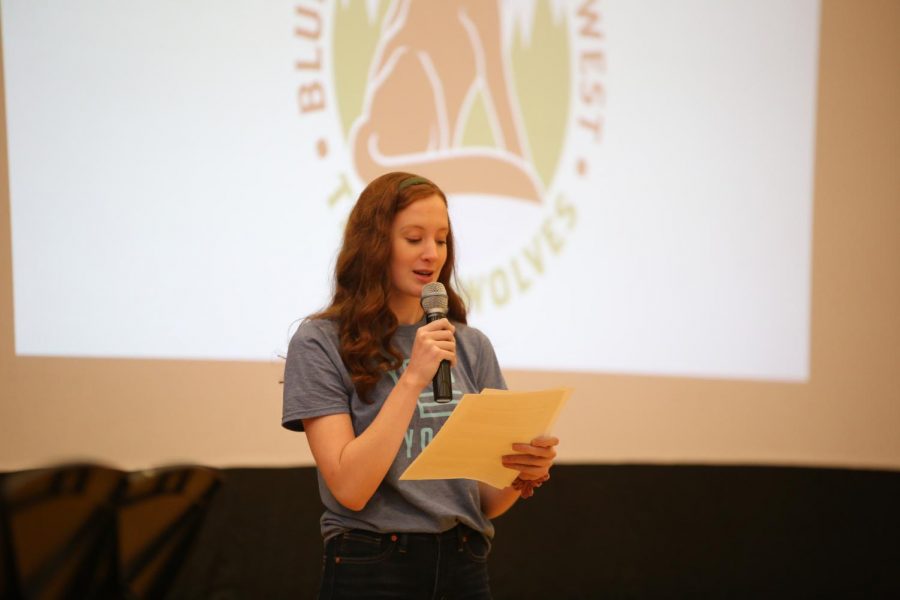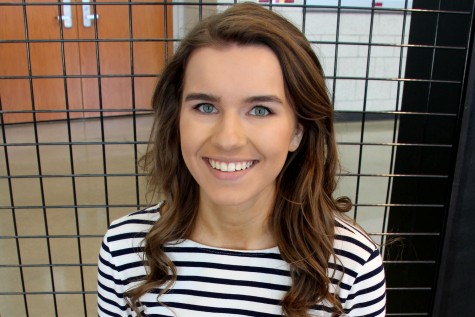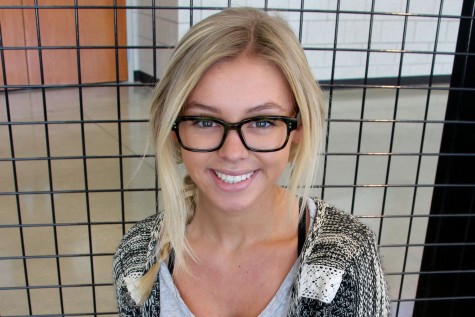Story updated in July 2023 to protect student’s anonymity.
The first day of school brought junior Quinn Logan the traditional new-student jitters. After leaving behind bad influences and unhealthy friendships at Blue Valley Northwest, Logan was nervous but eager for a fresh start. But creating new relationships and becoming accustomed to a new set of teachers weren’t the only changes that the new school year carried. The beginning of the school year marked Logan identifying as male.
When Logan was in elementary school, he always chose to be a boy when playing pretend games with his friends. His avatar in video games was always male, he shopped in the boy’s department, and he bonded with his father by playing football and attending monster truck rallies. Because of Logan’s tomboy appearance, he was sometimes asked if he was a boy or girl. While Logan would respond with “girl,” it never quite felt right.
It wasn’t until Logan’s sophomore year that he came out as transgender to his close friends. Despite being met with acceptance, Logan supposed it would be too difficult to change his pronouns with the students he had attended school with since second grade. But once he transferred, Logan saw the opportunity to identify as what he felt was his true self. Logan officially came out as transgender in a post on Facebook on Coming Out Day in October 2015. But as Logan learned, not everyone — especially his family members — was accepting.
“When I came out to my grandma, I asked her if it was OK, and she said, ‘No,’ and that she’d pray for me — it was terrible,” Logan said. “I started crying because I’ve always been my grandma’s favorite grandkid, and she’s never been mean to me, but just to hear her say something like that hurts really badly.”
Familial rejection is common among transgender teenagers. According to the Williams Institute at the University of California, Los Angeles, while LGBTQ youth make up less than 10 percent of the population, they account for 40 percent of homeless youth. Counselor Shari Schaake said although it may be difficult for family to understand what a transgender child is experiencing, familial acceptance and support are nevertheless crucial to a transgender child’s transition.
“Feeling accepted and loved are core values,” Schaake said. “If he’s not being accepted by his family members or friends, he has nothing to connect to. That’s the thing [transgender] kids most struggle with. If you’re not being accepted by your parents, you feel like you’re a failure and that you’re letting down [those] who are probably the most important people in your life.”
Logan said coming from a religious family has made it difficult for family members to accept his new identity. His mother, Jenny McNiece, is his only family member who has made an effort to use his correct pronouns, and he said the rest of his family ignores how he chooses to identify. Although McNiece said she has always unconditionally supported Logan, the coming out process has still been difficult.
“When Quinn came out as gay, I didn’t care; transgender is different because when Quinn came out as gay, I never felt like a failure,” McNiece said. “With transgender, it’s a constant, ‘What did I do wrong?’ Everything you thought you knew is gone. Every parent thinks of walking their child down the aisle and having babies — that’s gone. It’s not that my dreams are crushed. It’s now I have different dreams, and I have to figure out what those dreams are going to be.”
McNiece said there are three phases that parents go through when their child comes out as transgender: denial, grievance and acceptance. She said for her, the denial phase was short lived, and she describes herself as being at the point where she is accepting Logan’s new identity, but she is still grieving the loss of a daughter.
“I wish I knew what the future held, but I don’t,” McNiece said. “I’m doing the best that I can, and when I say that, it’s me doing the best that I can as a parent of a child who is obviously going through some really heavy [stuff]. The universe knew what it was doing when it gave me Quinn as a child. I think I’m the perfect parent for him because I do support him and will always love him. I’ll do whatever it takes to make him happy and keep him safe.”
Logan said his experience at school has been anything but similar to his experience with his family. He’s found a group of people he can relate to in Diversity Club and Gay-Straight Alliance, his teachers have been willing to refer to him as his preferred pronouns, and the school has been generally accommodating of his transition. Schaake said while the older generation is still becoming accustomed to transgender people, she often finds the younger generation is the most accepting of diversity.
“I feel like the student population is so much more educated and so much more accepting,” Schaake said. “The student population recognizes people are people — they’re not to fit into some cookie-cutter mold. I think, as adults, we can learn from that because we were all raised a little differently, so we’re all learning.”
Although Logan was teased at a younger age, he said he is fortunate he has not been bullied directly to his face since coming out as transgender. However, when Logan used the boys restroom at school shortly after coming out, he realized not all his classmates were accepting of his identity.
“I have a friend who heard people saying, ‘Oh, did you hear the transgender was using the guys bathroom? I would have punched it in the face if I saw it in there,’” Logan said. “I was bullied in third grade because people couldn’t tell if I was a boy or girl, so they’d call me ‘it,’ so I’m very sensitive when people call me ‘it.’ I have a hard time controlling myself when people are being ignorant.”
For his safety and in order to not start controversy, Logan devised a plan with Schaake and principal Scott Roberts for his restroom usage at school. Logan currently uses the gender-neutral restroom in the nurse’s office and is allowed to use whichever restroom he chooses in the office. While Roberts has worked on an individual basis with transgender students on restroom policies, he hasn’t yet encountered the situation where a transgender student wanted to join a sports team or use the locker rooms.
“There are more and more students who are choosing to identify themselves as transgender, and now we’ve got to figure out how we can make students feel comfortable — that’s the number one thing,” Roberts said. “We don’t have all the answers, and it’s not perfect right now, but it’s working from Quinn’s perspective, so that’s how we’re dealing with it now. We are looking at the school district on how to address it appropriately and address all students.”
The Kansas State High School Activities Association’s policy for transgender students wanting to participate in athletics states that the school is ultimately responsible for deciding the appropriate gender team for a transgender student. The school district currently has no set guidelines for transgender students and only began discussing policies last school year. Roberts said he’s not worried about the school district establishing appropriate guidelines, and in the meantime, students can become accustomed to attending school with transgender peers.
“I think students figure out Quinn is just a kid like every other student in the building,” Roberts said. “People are fearful of what they’re not exposed to. Quinn is just Quinn — he’s in class with us, and there’s not much difference with how we interact with Quinn. I think it’s important for students [to be exposed to transgender students] because students are going to continue to see this more and more, especially as they leave high school.”
Schaake said although some teachers may not agree with Logan’s lifestyle, the entire faculty and administration are nonetheless committed to respecting Logan’s identity.
“We as a staff are all on board with Mr. Roberts, so we’re going to figure it out together,” Schaake said. “We’ve got a lot of learning to do, but we’re all committed to doing that. We’ve got kids who want to be who they want to be and we will support that here — that’s the bottom line. I feel like we’re all headed in the right direction. There’s a processing time, and then you just work through it, and that’s where at. We’re working through it as a school district.”




